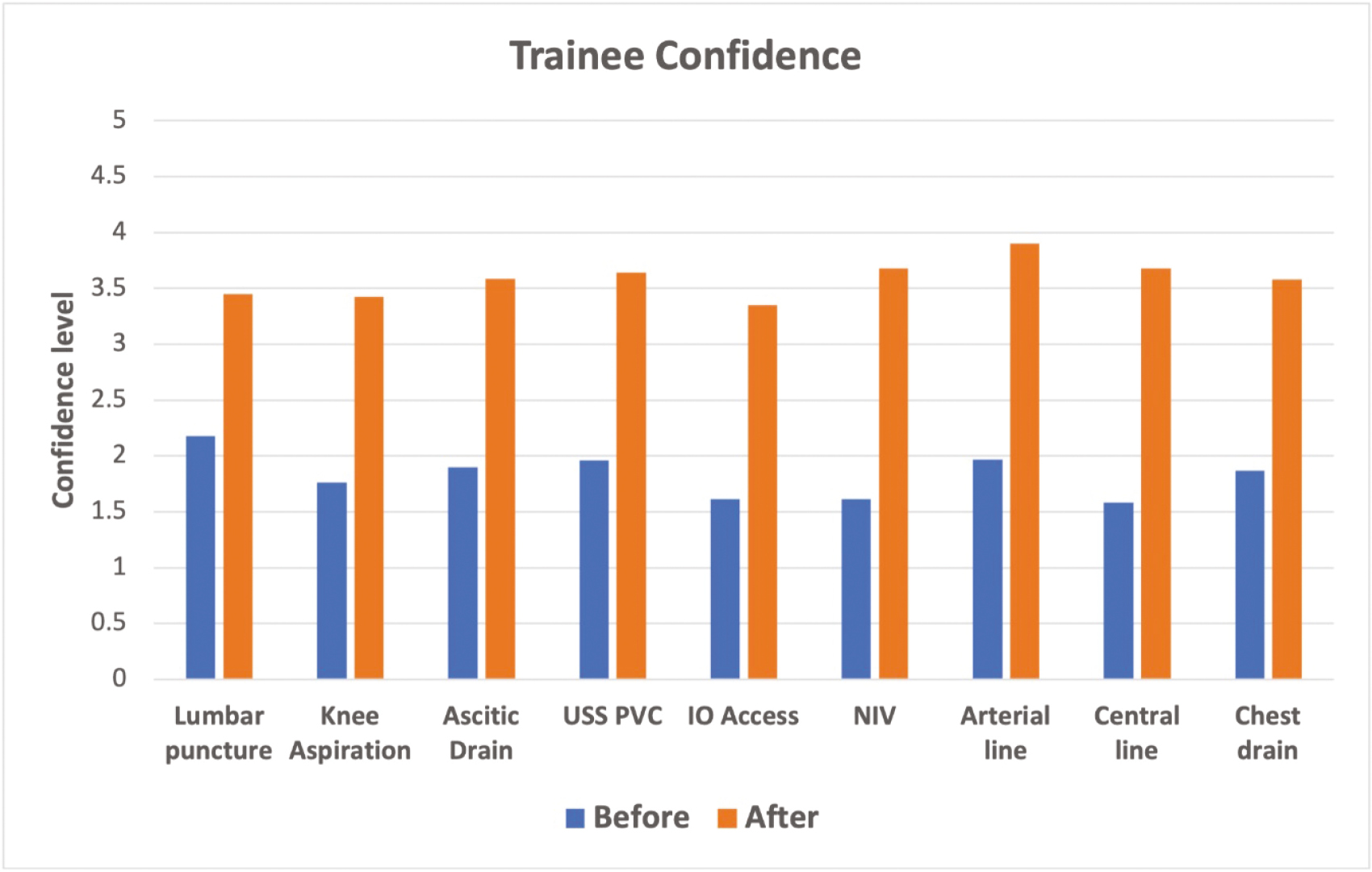
Junior doctors are frequently tasked with undertaking medical procedures despite studies demonstrating a lack of formalised training [1] and low confidence in procedural skills [2]. Commonly, they are taught using the outdated approach of ‘see one, do one’ [3]. “Learning by doing” is the sine qua non of medical education thus we aimed to create an innovative structured procedural skills workshop for junior medical colleagues. Our objective was to enhance the confidence of our learners in performing these procedures within an immersive and safe learning environment.
Two courses were developed guided by simulation-based educational theory:
1. Basic procedures: lumbar puncture, ascitic drain, USS-guided cannulation and knee aspiration.
2. Advanced procedures: non-invasive ventilation, central line, chest drain and arterial line.
Both courses ran as four stations each following a similar format:
● Discussion covering indications/contraindications/consent
● Simulated practice using part-task trainers and a modified Peyton’s approach
● Feedback delivered as a ‘learning conversation’
A flipped classroom model was utilised to maximise time for ‘hands-on’ practice. Learners were not formally assessed but use of peer feedback checklists was encouraged.
Experienced faculty were recruited; medical/ICU/ED registrars and HDU nurses. Faculty development was delivered to ensure uniformity of the sessions and to aid timekeeping. The learner to faculty ratio was 3:1.
On completion of the course, learners completed feedback forms to assess prior experience and confidence levels.
Our participants encompassed a range of grades including foundation trainees, clinical fellows and internal medical trainees. 8 courses were delivered in total. 75 of the total 84 participants completed the feedback.
Learners rated their confidence levels before and after the course (Figure 1-A107). The results revealed a marked improvement in confidence across all procedures, independent of trainee grade or prior experience.


Qualitative feedback highlighted the “interactive” and “friendly atmosphere” which made the sessions more “engaging” with all participants recommending the courses to a colleague, suggesting that the courses were well liked.
The results indicate a significant improvement in trainee confidence as a result of our courses, independent of trainee experience or grade. Both courses also demonstrated high levels of satisfaction. This suggests that the course effectively addressed a potential training gap. The course provided an opportunity for faculty to develop as teachers and achieve training portfolio requirements. Future developments include offering a follow-up session for competency assessment at skills-lab level and assessing the longer-term impact of the session on confidence through follow-up surveys at 6 months post-course.
Authors confirm that all relevant ethical standards for research conduct and dissemination have been met. The submitting author confirms that relevant ethical approval was granted, if applicable.
1. Manthey D, Fitch M. Stages of competency for medical procedures. The Clinical Teacher. 2012;9(5):317–319.
2. Lim CT, Gibbs V, Lim CS. Invasive medical procedure skills amongst Foundation Year Doctors - a questionnaire study. JRSM Open. 2014;5(5):2054270414527934.
3. Giacomino K, Caliesch R, Sattelmayer KM. The effectiveness of the Peyton’s 4-step teaching approach on skill acquisition of procedures in health professions education: A systematic review and meta-analysis with integrated meta-regression. Peer Journal (San Francisco, CA). 2020;8:e10129-e.